How To Apply Kt Tape To Calf
You've probably seen pro runners donning black or brightly colored record on their legs or knees for race twenty-four hour period. Or maybe y'all've spotted it on boyfriend runner standing next to you lot on a starting line. You lot might fifty-fifty know that what they're wearing is called kinesiology tape (or kinesio tape and even "KT tape" thanks to the pop brand for short).
But what does kinesiology tape actually practice? And does it help? And how does KT tape work? We tapped meridian experts in the field to get you lot answers.
Join Runner'southward Globe+ for unlimited access to the best training tips for runners
More From Runner's World

What is kinesiology tape?
Kinesiology tape is, quite literally, tape that you lot (or, really, your physical therapist or physician) utilise to your muscles. "It's an elastic tape that provides sensory input into an expanse, only all the same allows for full range of motion," explains Laurey Lou, a physical therapist, certified force and conditioning specialist.
It was developed back in the 1970s by Kenzo Kase, a chiropractic doctor, in Japan; instead of using stiff medical record, he wanted to create something that mimicked the elasticity of human skin. While it was used widely by professional athletes, physical therapists, and trainers alike, it didn't really go mainstream until the 2008 Summer Olympics—retrieve when volleyball player Kerri Walsh wore KT tape on her shoulder and subsequently won the aureate medal? Now, kinesiology tape is ubiquitous in the athletic world.
Most KT tape is made from a combination of cotton, spandex, and adhesive, which is what makes information technology different from the standard athletic tape you might see wrapped around someone's talocrural joint. "Traditional athletic record is fabricated of merely cotton, and so it doesn't accept the stretching ability that kinesiology record has," explains Grayson Wickham, a concrete therapist, certified strength and conditioning specialist, and founder of Movement Vault.
Athletic tape is ordinarily used to create support around a articulation, he says, which actually restricts movement. Kinesio tape, on the other hand, can really stretch up to xl per centum of its original length while retaining its elasticity, which is what allows it to provide back up without hindering your trunk's movements.
This content is imported from poll. You may be able to find the same content in another format, or yous may be able to find more information, at their web site.
How does KT tape piece of work?
When applied correctly, KT tape is meant to piece of work by lifting the peel from the tissues below it. Everyone has nerve receptors in their skin, as well as in the deep layers of the fascia, muscles, and other connective tissues, Wickham says. "When tape is applied, information technology causes compression or decompression of these areas, supposedly allowing it to alter pain signals to the brain," he says.
It's the record's elasticity that matters most. "We can utilise more tension to turn on or excite a muscle," says Kellen Scantlebury, D.PT. and owner of Fit Gild Physical Therapy and Sports Performance. For case: If someone gets surgery to repair their ACL, their quad volition likely be weak. Taping the quad with maximum tension, he explains, brings those muscle fibers together, essentially causing a wrinkle (which is what strengthens your muscles). (One small written report on 15 people does say KT tape may amend the force of drawn quads.)
On the flip side, if someone has plantar fasciitis and is experiencing a lot of tightness in their calves, taping with limited tension tin supposedly turn "off" the muscle so the person isn't receiving hurting signals, Scantlebury explains.
With that in listen, KT tape may sound like a phenomenon cure for running injuries, but you don't desire to utilize information technology equally a crutch. Information technology'due south important to talk with your doctor about whatsoever injuries and accost the root crusade, peculiarly before trying DIY-recovery methods.
"When I first work with someone, I have them wear the record while they're exercising, while they're doing twenty-four hours-to-day activities, whatever," says Scantlebury. The tape typically lasts for 3 to v days, even if you shower or swim with it, and the constant habiliment is to re-educate the trunk to perform in a more optimal way. "You lot want the record to give that consistent feedback over a sustained period of fourth dimension and then the body becomes aware that this is now the new normal," he says.
After one habiliment, if your muscles are doing what you lot want, at that place's no need to reapply; y'all don't desire your muscles to rely on the record to do their job. If they're still not doing what you want them to do, yous tin can try again with the tape (but wait a few days to give your peel time to exhale).
There'due south a pretty major catch to kinesio tape: There'south not a whole lot of bear witness that it reduces swelling or pain or increases muscle function, as information technology claims. Ane meta-analysis published in 2012 found that it may take a pocket-size beneficial role in improving strength and range of motion, but says further studies are needed to confirm these findings. An experiment published in 2015 institute that kinesiology tape may only accept a placebo effect (ane that does work, though).
More recent inquiry, including a systematic review published in 2018, institute no compelling evidence to evidence that KT record enhances performance. Another systematic review published in 2020, which focused specifically on tendinopathy (or tendon conditions that crusade pain and swelling), revealed that there's picayune evidence to show KT tape treats these types of injuries beyond the brusque-term and the authors say more enquiry is needed.
What is KT record used for?
"Depending on the mode kinesiology tape is applied, it can be used for a multifariousness of different things including, only not express to, musculus inhibition/facilitation, pain relief, decreasing swelling, proprioceptive stability (helping your muscles provide stability while still allowing for motion), and tissue decompression," Lou says.
For runners, there are a few mutual hurting issues that kinesiology tape may assistance address. Only keep in mind: If you're experiencing any of these bug and recollect kinesiology tape could help, head to a professional before you lot unravel your start roll. "It looks easy, but you don't desire to be turning on or heady a muscle that's already overactive or turning off a muscle that's already underactive," says Scantlebury. "Over time, that can cause even more damage. Getting some education from a licensed professional is tremendously valuable."
To find a Certified Kinesio Taping Practitioner (CKTP) in your area, visit this site. But here's a lilliputian lesson on what the tapping will expect like:
Shin Splints: This kind of hurting happens when y'all overload the muscles in the front of your shin, causing inflammation in the musculus, tendon, and bone. A pro will tape from but below the outside of your human knee to just beneath the base of your big toe, then tape additional strips the length of the total width of your shin laterally over your hurting points.
Knee Pain: 1 of the most common bug for runners, genu pain typically stems from imbalances or weak glutes. Your doc will place 2 strips on the quad muscle and then run them down the right and left of the human knee cap to create a teardrop shape, Wickham says. Then place one strip running across the other 2 below the knee cap.
Plantar Fasciitis: This occurs when you lot overload the connective tissue that runs from your heel to the base of operations of your toes, resulting in heel pain. A concrete therapist will probable put one strip down the bottom of the foot, the another strip crossing the showtime on the arch surface area of the bottom of the pes, Wickham says.
Achilles Tendon Pain: As well much stress tin tighten and overwork the large tendon connecting the two major calf muscles—the gastrocnemius and soleus—to the back of the heel bone. Your pro will likely identify ane strip starting at the mid-calf downwardly to the bottom of the human foot, and so cross another strip over the dorsum of the heel/talocrural joint, Wickham says.
General Muscle Hurting: If you're experiencing general soreness or want more support for a muscle, a professional might place two strips (or cutting ane strip into a "Y" shape) to border the area, Lou says.
Swelling: If you rolled or tweaked a joint, and it is inflamed, a md might brand small projections off the anchor betoken of the tape (and then it looks similar an octopus) and lay it with no stretch over the swollen area, Lou says.
What kind of KT tape should you use?
There are enough of kinesiology tape options out there, and what you employ tends to be a matter of personal preference. 1 adept dominion of thumb: Synthetic tapes tend to be more supportive over longer periods (recall: a marathon), while cotton wool tapes are softer and a little less supportive.
Whichever one you become with, brand certain to wipe the area you're going to tape with alcohol before applying to remove dirt or dust that could mess with the adherence. And when y'all take it off, "don't rip it off like an adhesive cast, which tin leave a scar," Scantlebury says. "Instead, push the skin abroad from the tape instead of peeling the tape from the peel."

Ashley Mateo is a writer, editor, and UESCA- and RRCA-certified running motorcoach who has contributed to Runner's World, Bicycling, Women'south Wellness, Health, Shape, Self, and more than. She'll get anywhere in the globe once—fifty-fifty if it'south just for a skilful story. Also into: skillful pizza, practiced beer, and practiced photos.
This content is imported from poll. You may exist able to notice the same content in another format, or you may be able to observe more information, at their web site.
Source: https://www.runnersworld.com/health-injuries/a23791766/kt-tape/

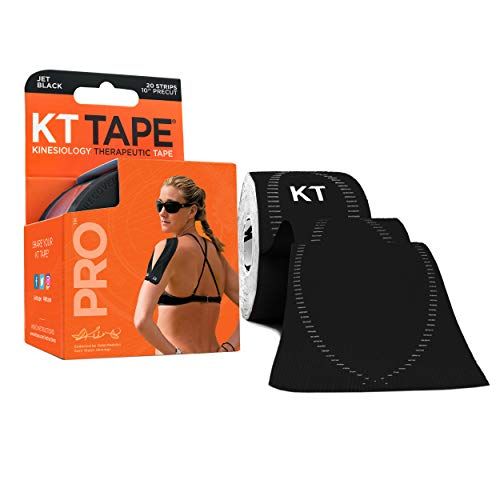
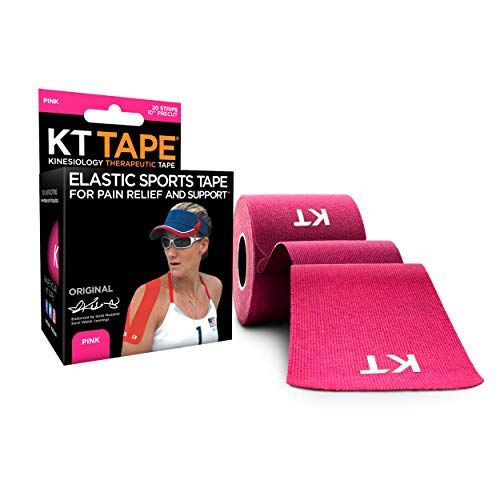
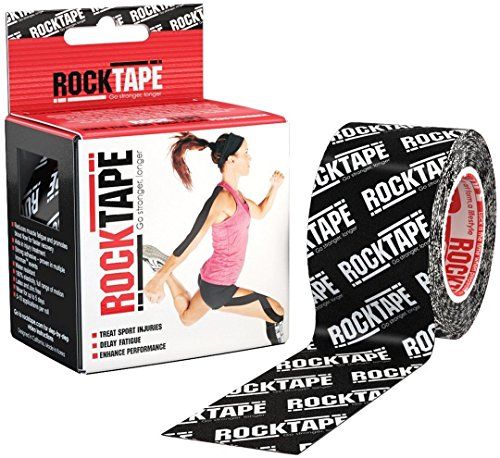
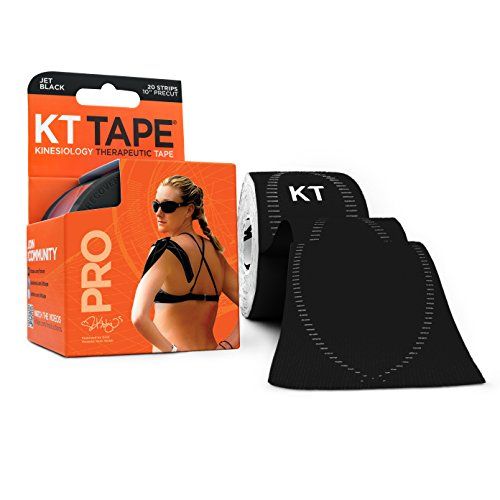
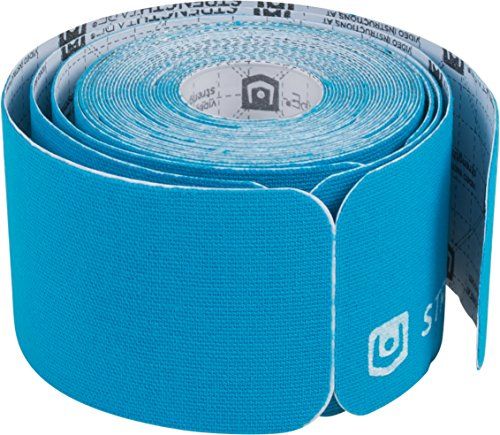
0 Response to "How To Apply Kt Tape To Calf"
Post a Comment